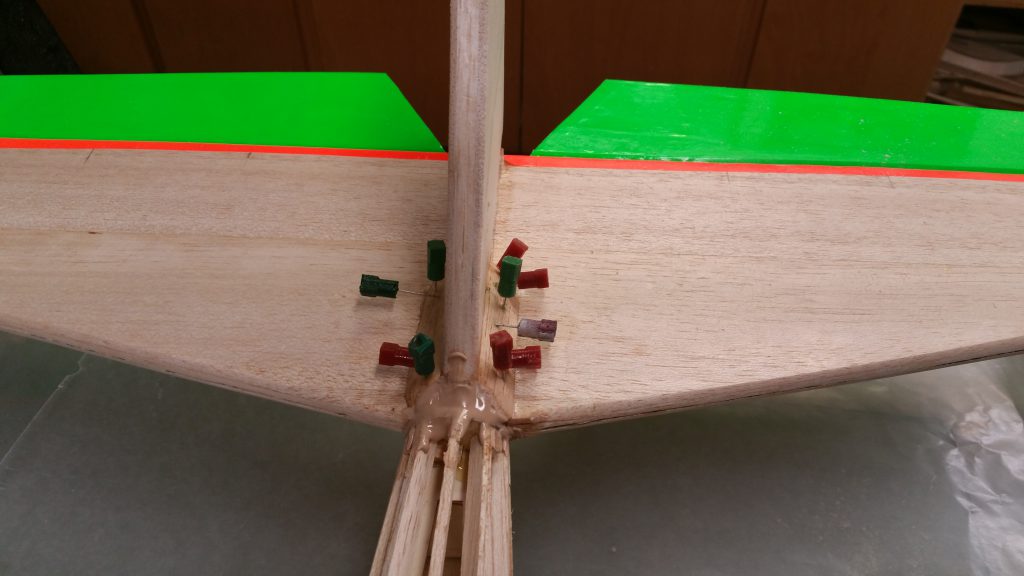Had another great building session with Peter today. I started with covering the other wing tip in green, which again took a lot of time and due diligence! I was able to do this one by myself as I remembered what I learned from working with Peter & John while covering the other tip, bottom of this post.
Afterwords I glued the balsa tail fairing blocks into place. In order to do this I cut two 3″ lengths of 1/2″ balsa triangle stock to serve as tail fairing blocks. I then marked one for each side of the fin. Peter showed me on the first one how to angle the back so it tapers from front to back. You mark a line for the max you can go for your tapper as well as marking where F6 (Former) rounds against the block as you then sand to achieve the desired taper at the back and to get it to be ‘aerodynamic’ with F6, as you don’t want it to be squared up above creating unnecessary resistance. The reason for these two blocks is that in the design the fin is not sturdy enough without them and can cause the fin to flutter or break off during flight. These two fairing blocks provide additional support to the fin to help prevent side to side movement.

After that was completed we poured some glue into a small container and mixed in another compound with the glue in the original container. The compound makes the glue thicker, so you keep adding and stirring until you get the consistency you are looking for. We then went over the sheeting on the wing and found any little whole, indent, ding, ‘non-smooth surface’ we could find and filled it with the mixture. We then left it to dry. The beauty of this mixture is that it is easy to sand, so next time I’ll sand for a smooth finish.
Now I should mention these two pictures were taken a bit prematurely as afterwords decided to use a ‘spatula’ type device, just the rubbery part, to spread the compound smoothing it out and thus removing the excess so there will be far less sanding involved then what these pictures lead you to believe! Lol. I also went back to the fin and filled in the gaps between F6 and the tail fairing blocks which will then get sanded for a better finish.

Using the little bit of glue I transferred to a smaller container I mixed in some acetone to thin the glue making it easier to apply and act as a sealant. I then brushed it on the front side of the firewall, bottom front of the fuselage and the sides. The acetone evaporates and just leaves the glue behind to dry. After the first coat dried I applied a second.
The purpose of sealing these four surfaces is that this is where the engine will be mounted into and you do not want any leaking fuel/oil mixture soaking into the wood, causing the wood to loose its structural integrity.

I’ll wrap this post up with a picture I took to demonstrate what not to do! While sealing the front of the fuselage with glue a fair bit dripped through the whole in the bottom onto the piece of wax paper laid on the floor. While walking around the workshop working on other things and while applying the glue itself need to make sure not to step into the glue. If you’re thinking, why not just remove it from the floor after applying the glue?, it’s because even after application while it dries the glue continues to run and drip onto the floor.
Peter suggested I take a pick of the glue accumulated on the floor so I had fun with it as you can see me about to step onto the wax paper with glue.

Note that I did not actually step in any glue! Which is a good thing as it’d be a royal pain to get off of my shoes. Yes I wear old clothes and my older runners while there as you just never know what kind of mess you might make and with all the sanding the saw dust sure flies some days!

